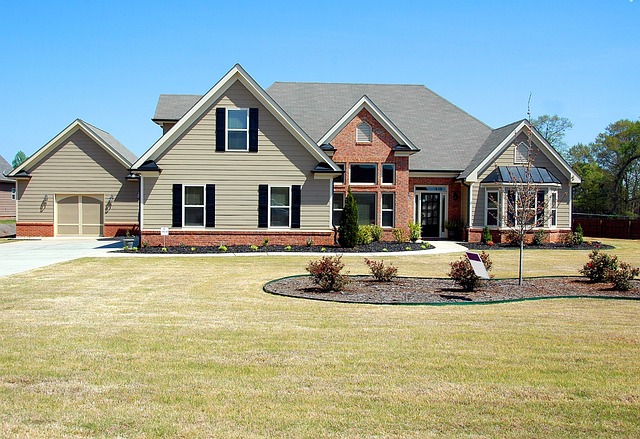What Determines Home Value: Key Factors to Know in the Market
Home value reflects what a residential property is likely to fetch in today’s real estate market. Learn the main drivers—location, condition, market trends, and improvements—and practical ways to boost property value. Ideal for homeowners and buyers assessing fair prices and investment choices.

Homes are valued by more than square footage alone. A property’s worth is shaped by a blend of tangible features, local market dynamics, and buyer perceptions. Understanding these elements helps homeowners make smart upgrade decisions and enables buyers to evaluate whether a listing is priced fairly.
Location and neighborhood influences
Location remains the single most powerful factor in property valuation. Proximity to schools, transit, employment centers, and amenities such as parks and shops drives demand. Neighborhood trends—crime rates, walkability, planned developments, and zoning changes—also affect long-term appreciation. Even within the same city, two houses with similar layouts can sell for very different prices because of their exact location.
Age, style, and construction quality
A home’s age and architectural style influence buyer preferences. Newer homes often include contemporary layouts, efficient systems, and lower immediate maintenance needs, which can command higher prices. On the other hand, historic or architecturally distinctive homes can attract premiums in markets that prize character and craftsmanship.
Beyond age and style, the quality of materials and workmanship has a lasting effect on value. Durable finishes—such as solid wood floors, stone countertops, and well-installed windows—help a home retain value. Proper foundations, adequate insulation, and efficient HVAC systems increase buyer confidence and can raise a home’s marketability.
How market conditions shape prices
Real estate markets move in cycles. When demand outpaces supply (a seller’s market), competition among buyers often pushes prices up. Conversely, when inventory is plentiful (a buyer’s market), sellers may need to lower prices or offer incentives. Broader economic indicators—local job growth, population shifts, and major infrastructure projects—can shift demand and influence values.
Interest rates are another major factor. Lower mortgage rates make buying more affordable for many buyers, which can boost demand and push prices higher. When rates rise, borrowing costs increase and some buyers may step back, cooling price growth or causing price declines in certain areas.
Appraisals vs. assessments: different purposes
Appraisals and tax assessments are both valuations, but they serve distinct functions. An appraisal is typically ordered by a lender during a home purchase or refinance; it estimates market value based on comparable sales, the property’s condition, and other market data. Appraisals can directly affect loan amounts and whether a deal proceeds.
Property assessments are conducted by local governments to set tax obligations. While assessors aim to approximate market value, assessed values can lag behind actual market changes and sometimes differ markedly from appraised or sale prices.
Practical ways homeowners can boost value
Targeted improvements tend to yield the best returns when they respond to buyer priorities. Kitchen and bathroom updates are frequently high-impact projects because they address daily functionality and aesthetic appeal. Adding energy-efficient features—better insulation, new windows, upgraded appliances, or solar panels—can attract cost-conscious buyers and increase a home’s desirability.
Curb appeal matters. First impressions influence buyer decisions: fresh exterior paint, tidy landscaping, and a well-maintained entryway make a property feel cared for and can accelerate offers. Creating additional usable space—such as finishing a basement, converting an attic, or adding a deck—effectively increases square footage and utility, often translating into higher valuations.
Routine maintenance and timely repairs preserve value. Addressing structural issues, roof problems, or outdated systems before listing prevents major negotiation setbacks and reassures buyers during inspections.
| Common Upgrade | Typical Return on Investment (ROI) |
|---|---|
| Kitchen remodel (mid-range) | 60–80% |
| Bathroom update | 50–75% |
| New windows (energy-efficient) | 50–70% |
| Adding living space (finished basement) | 50–70% |
| Exterior improvements / landscaping | 50–100% |
Cost disclaimer: These figures are estimates and will vary by region, property condition, and market timing.
How buyers can determine a home’s fair value
Buyers should combine online research with professional input. Comparative market analysis—reviewing recent sales of similar homes (comps) in the neighborhood—offers a practical baseline. Automated online estimates can be a helpful starting point but often miss local nuances, recent upgrades, or neighborhood shifts.
Hiring a licensed appraiser or working with an experienced real estate agent provides deeper insight. Professionals can evaluate renovation quality, uncover potential issues that affect value, and factor in planned developments or zoning changes that might influence future appreciation.
Final considerations
Home value is not a fixed number but a reflection of many interacting factors: where the property sits, how it’s built and maintained, the health of the local market, and buyer expectations. For sellers, prioritizing high-impact improvements and keeping good maintenance records helps maximize sale price. For buyers, careful comparison of comps, professional appraisals, and a realistic view of needed repairs will lead to smarter purchasing decisions.
Approaching property valuation with an awareness of these variables equips both homeowners and buyers to make informed choices, whether the goal is to increase resale value or to identify a fair purchase price.






